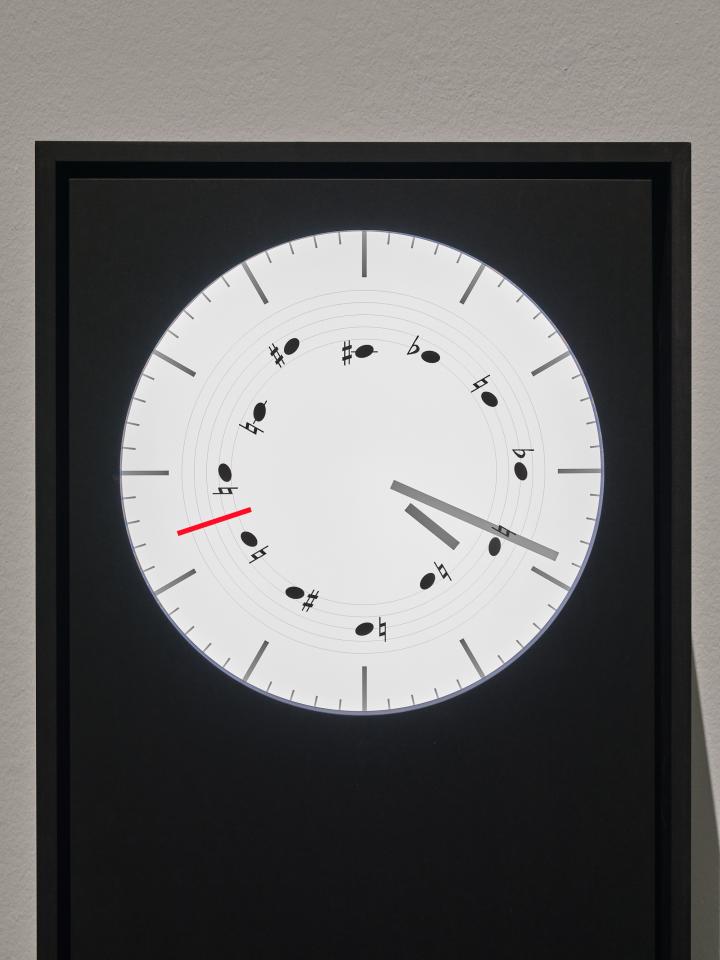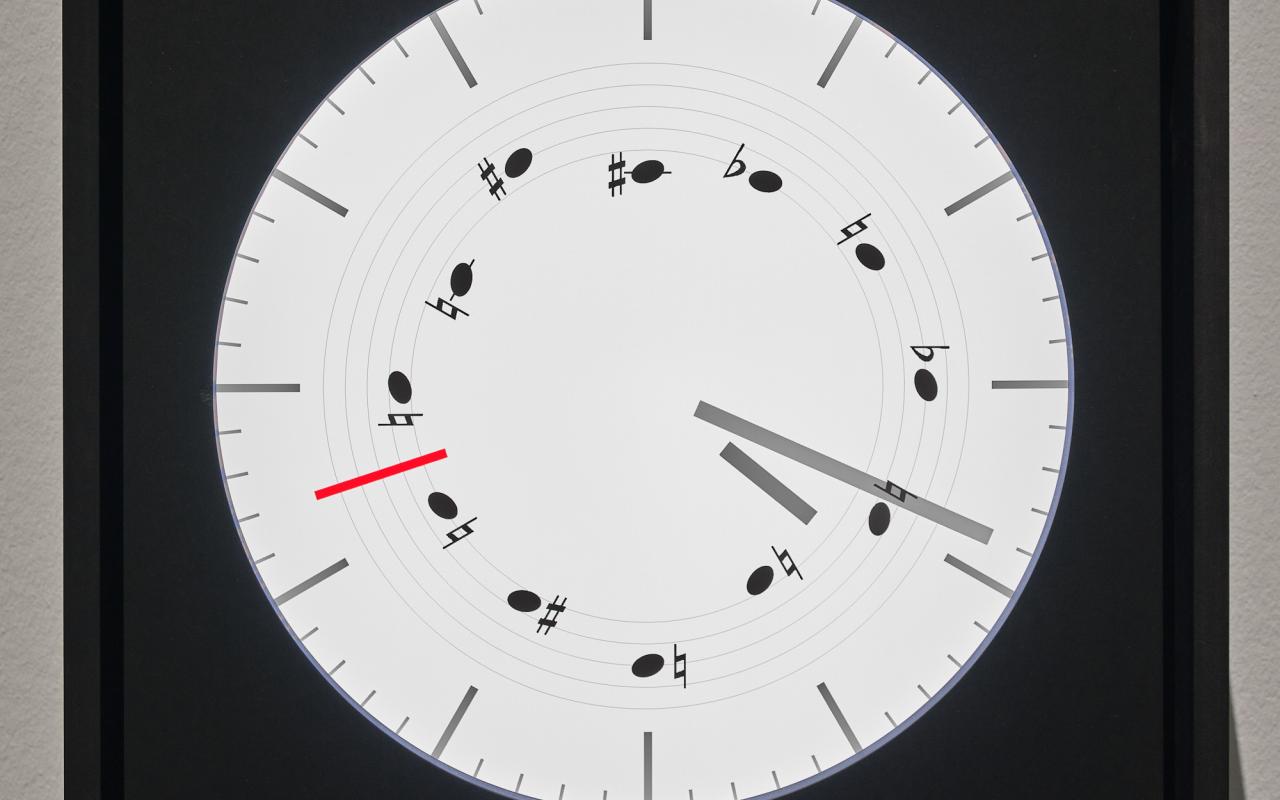Peter Weibel, Götz Dipper, Bernd Lintermann
Zwölftonuhr

- Artists
- Peter Weibel, Götz Dipper, Bernd Lintermann
- Title
- Zwölftonuhr
- Year
- 2023
- Medium / Material / Technic
- Sound installation, 2 networked PCs, custom made software, screen, loudspeakers, wooden case
-
The installation »Zwölftonuhr« (twelve-tone clock), which Götz Dipper and Bernd Lintermann created based on an idea by Peter Weibel, follows the tradition of musical automata. But unlike its mechanistic precursors, »Zwölftonuhr« holds the surprise of computer-generated random operations. Using a compositional paradigm called aleatoric music, which came to the forefront of contemporary music in the 1950s, it generates previously unheard melodies.
The work revolves around the number twelve, which is elementary to both the traditional western system of tonality and the face of a clock. While the day is divided into twelve equally long intervals called hours, the tonal system consists of twelve half-tone steps. Whenever the second hand reaches the number representing an hour, a note is played. The distribution of the twelve tones across the twelve numbers on the face of the clock changes in an unpredictable way with each rotation.
The twelve-tone composition technique developed by the Second Viennese School around Arnold Schönberg around 1920 aims at avoiding tonality, which gives the resulting music an open and floating quality. »Zwölftonuhr« follows the artistic ambitions of the avant-garde by interrupting the regular beat and sound of the mechanism every twelve minutes with short compositions featuring the previously heard tonal sequence and freely variating tempos and sounds.
